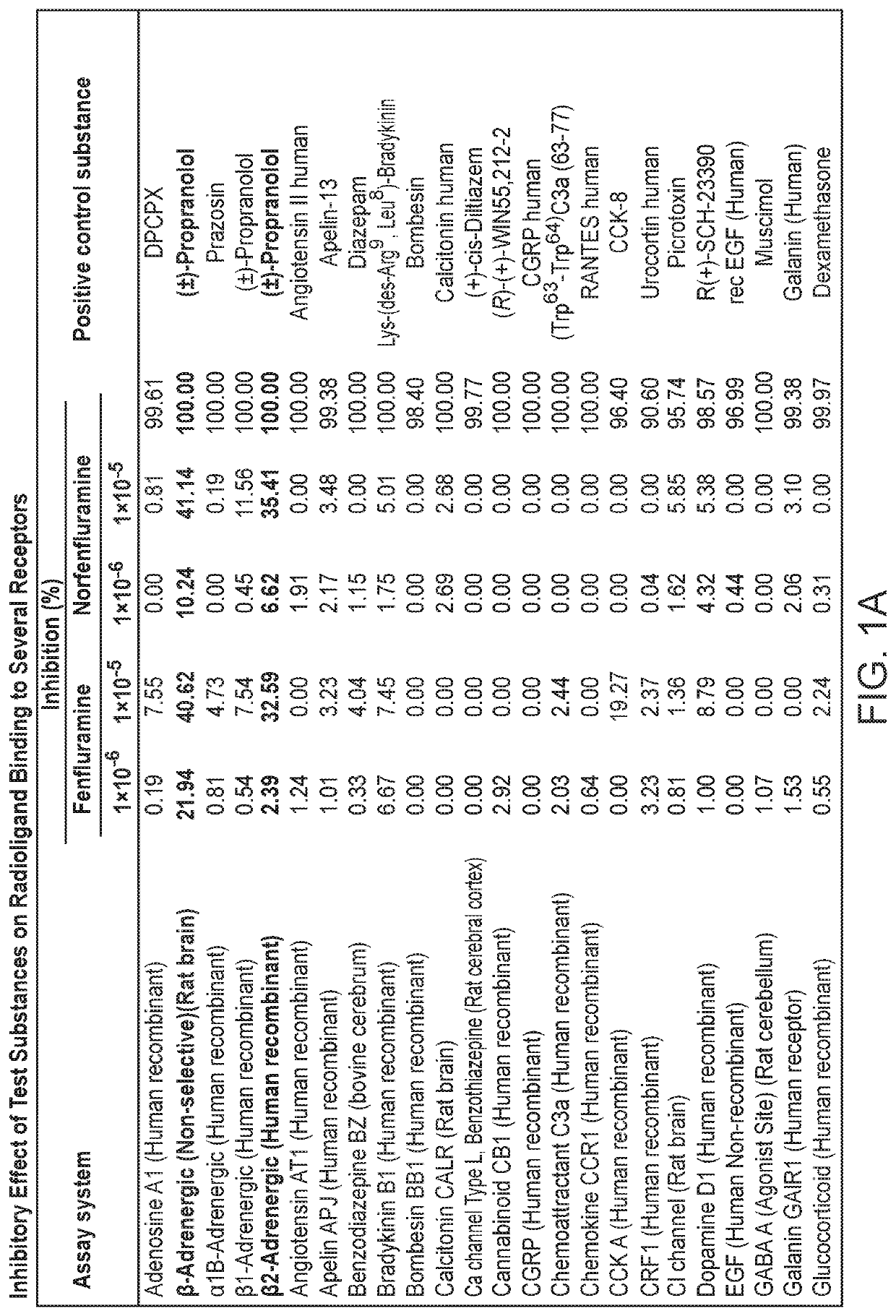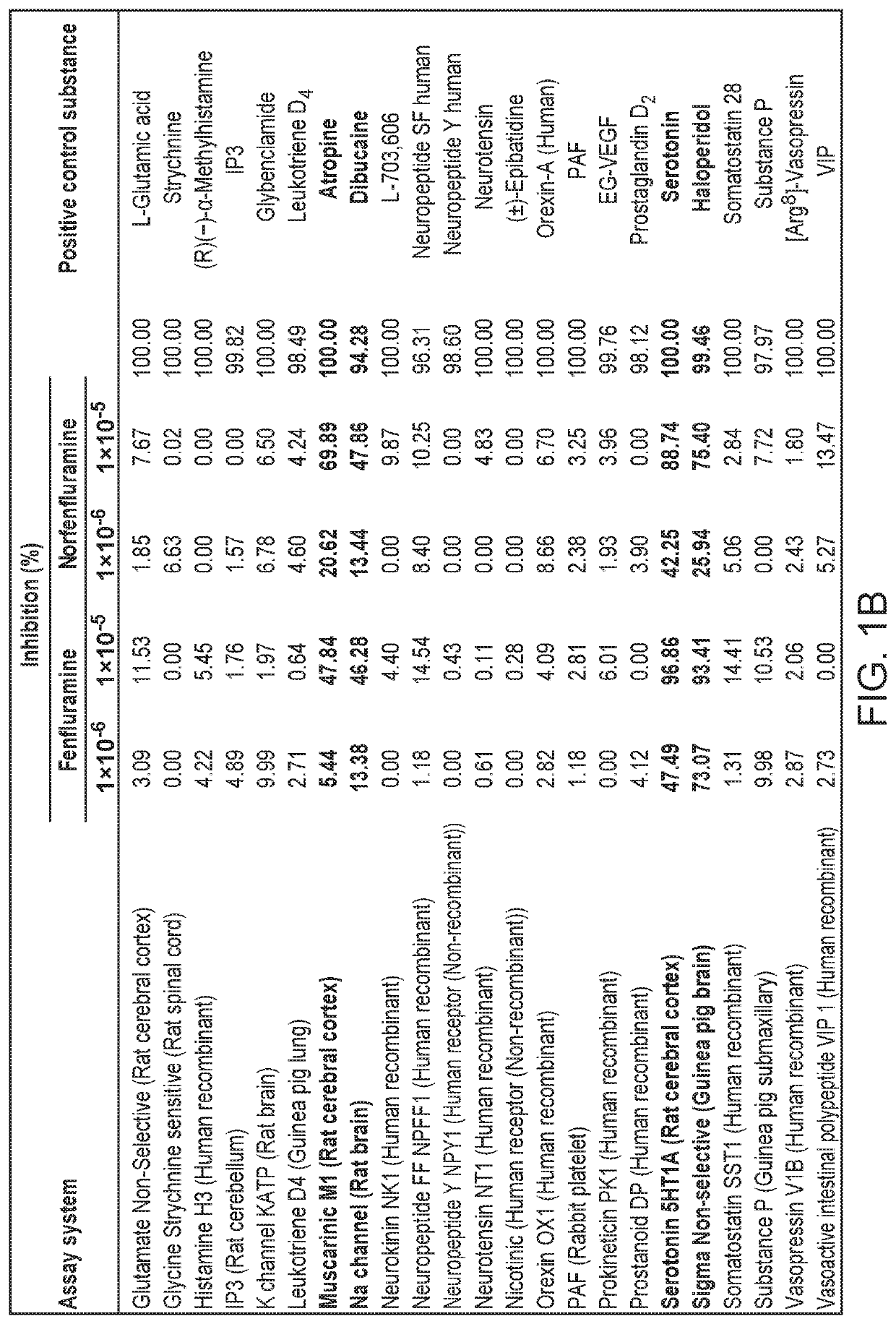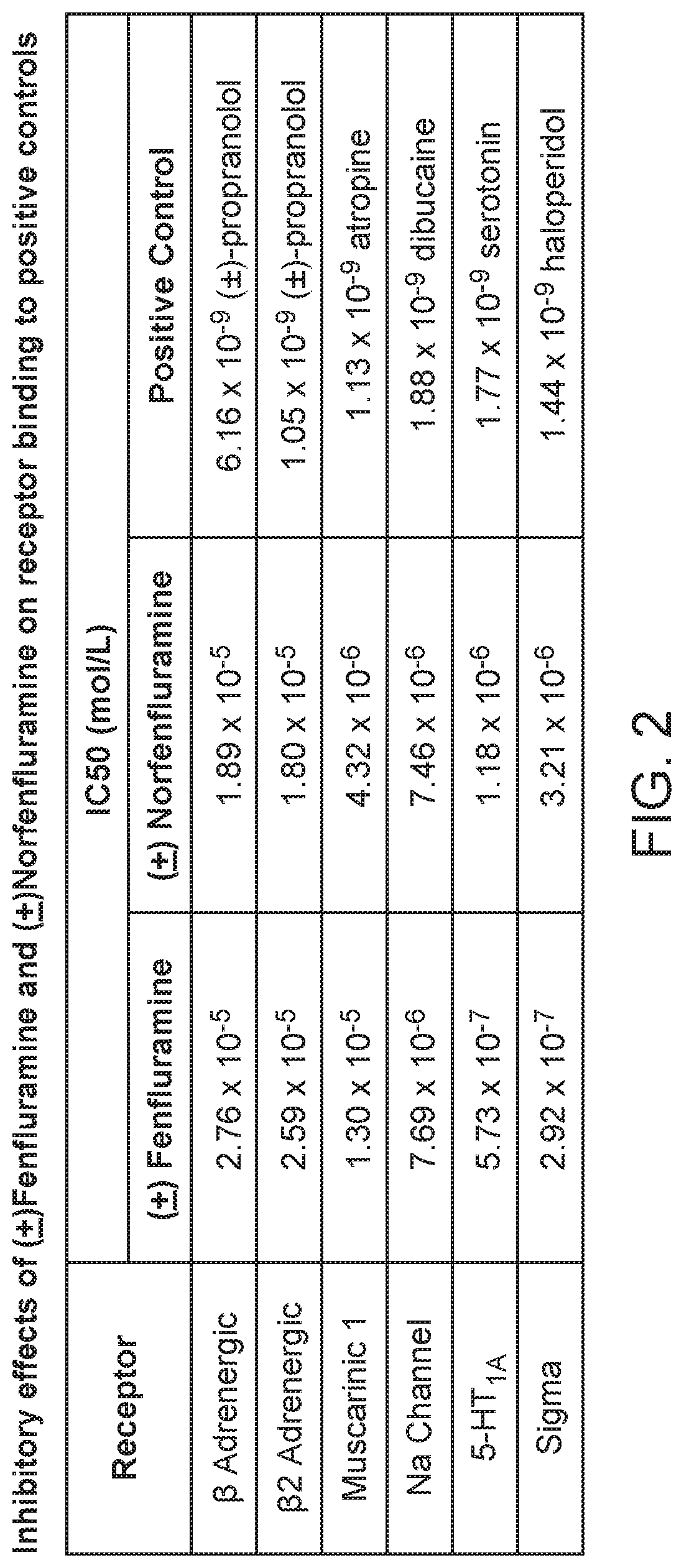Compositions and methods for treating seizure disorders
a seizure disorder and composition technology, applied in the direction of nervous disorders, drug compositions, organic active ingredients, etc., can solve the problems of poor language and motor skills development, total ineffectiveness against others, and worsening the frequency and severity of seizures
- Summary
- Abstract
- Description
- Claims
- Application Information
AI Technical Summary
Benefits of technology
Problems solved by technology
Method used
Image
Examples
example 1
Results and Conclusion
[0305]Results are presented in tabular form. See FIG. 1A and FIG. 1B.
[0306]Based on the results of the competitive binding assays, fenfluramine and norfenfluramine were found to significantly inhibit receptor binding of positive controls by the following receptors: β-Adrenergic (Non-selective) (Rat brain), β2-Adrenergic (Human recombinant), Muscarinic M1 (Rat cerebral cortex), Na channel (Rat brain), serotonin 5-HT1A (rat cerebral cortex) and Sigma non-selective (Guinea pig brain)
Example 2
Determination of IC50, KD and KI for Fenfluramine and Norfenfluramine Binding to Selected Receptors
[0307]IC50, Kd and Ki values of fenfluramine and norfenfluramine were determined for the following receptors: β-Adrenergic (Non-selective) (Rat brain), β2-Adrenergic (Human recombinant), Muscarinic M1 (Rat cerebral cortex), Na channel (Rat brain), serotonin 5-HT1A (rat cerebral cortex) and Sigma non-selective (Guinea pig brain).
Example 2
Materials and Methods
Preparation of Reagent...
example 2
Results and Conclusion
[0313]These results show that racemic fenfluramine and racemic norfenfluramine show moderate binding of the β-1 adrenergic, (β2 adrenergic, muscarinic M1, Na channel, 5-HT1A, and sigma receptors relative to positive controls.
Example 3
Determination of IC50, KI and KD Values for Binding of Enantiomers of Fenfluramine and Norfenfluramine to Selected Receptors
[0314]The therapeutic effects of some pharmaceutical agents, notably citalopram, are associated with one stereoisomer while unwanted side effects are associated with the other, thus in some cases it is possible to obtain therapeutic benefits while minimizing side effects by administering a pure enantiomer of a chiral therapeutic agent.
[0315]Most of fenfluramine's undesired side effects are attributed to the effects of its metabolite norfenfluramine, particularly at the 5-HT2B receptor. Therefore, as a first step towards determining whether the enantiomers of fenfluramine and / or norfenfluramine had disparate ef...
example 3
Data Analysis and Results
[0323]Ki values were calculated for (+) and (−) fenfluramine and for (+) and (−) norfenfluramine for the following receptors using competitive inhibition assays: Beta-adrenergic. Beta2-adrenergic, Muscarinic M1, Na Channel, Sigma (nonselective), Sigma 1, and Sigma 2. % Inhibition, IC50, Kd, and Ki values were determined as above. Results are shown in FIG. 4, FIG. 5A and FIG. 5B.
[0324]For 5-HT1A, there was no difference in binding of the fenfluramine enantiomers. (−)norfenfluramine showed slightly tighter binding to the receptor than (+)norfenfluramine (Ki=4.09×10−7 and 1.14×10−6).
[0325]For 5-HT2A, 5-HT2C or 5-HT7, there were no differences between binding of the test compounds and their enantiomers (data not shown).
[0326]For 5-HT2B, there was no difference in binding of the fenfluramine enantiomers. (+)norfenfluramine showed slightly tighter binding to the receptor than (−)norfenfluramine (Ki=2.42×10−7 and 1.20×10−6 respectively (data not shown)
[0327]For the...
PUM
| Property | Measurement | Unit |
|---|---|---|
| time- | aaaaa | aaaaa |
| structure | aaaaa | aaaaa |
| frequency | aaaaa | aaaaa |
Abstract
Description
Claims
Application Information
 Login to View More
Login to View More - R&D
- Intellectual Property
- Life Sciences
- Materials
- Tech Scout
- Unparalleled Data Quality
- Higher Quality Content
- 60% Fewer Hallucinations
Browse by: Latest US Patents, China's latest patents, Technical Efficacy Thesaurus, Application Domain, Technology Topic, Popular Technical Reports.
© 2025 PatSnap. All rights reserved.Legal|Privacy policy|Modern Slavery Act Transparency Statement|Sitemap|About US| Contact US: help@patsnap.com



